Moniek Bloks's Blog, page 48
May 21, 2024
Royal Wedding Recollections – The Prince of Asturias & Letizia Ortiz Rocasolano
On 1 November 2003, the engagement between the Prince of Asturias and journalist Letizia Ortiz Rocasolano was announced. The wedding took place on 22 May 2004 in the Almudena Cathedral at the Royal Palace of Madrid.
Embed from Getty ImagesIn the early hours of 22 May, a wreath of flowers from Felipe and Letizia was delivered to the Forest of Remembrance in memory of the victims of the 2004 Madrid train bombings.
The Archbishop of Madrid, Antonio María Rouco Varela, presided over the ceremony, which was watched on TV by 25 million people in Spain.
Letizia wore the Prussian tiara, which her soon-to-be mother-in-law had also worn for her wedding. Her wedding dress, designed by Manuel Pertegaz, was woven with Valencia silk and embroidered with silver and gold thread. It had long sleeves and a corolla-shaped neckline. It had a 4.5-metre-long train, which was embroidered with heraldic motifs. The veil was a gift from her husband. Her wedding shoes were made by Pura López. Meanwhile, the Prince of Asturias wore the Great Tag suit of the Army.
Embed from Getty ImagesEmbed from Getty ImagesUpon her marriage, Letizia became entitled to the feminine of her husband’s titles, and she was primarily known as the Princess of Asturias until her father-in-law’s abdication in 2014. They have two daughters together.
The post Royal Wedding Recollections – The Prince of Asturias & Letizia Ortiz Rocasolano appeared first on History of Royal Women.
May 19, 2024
The crypt of the Theatine Church in Munich
The Theatine Church in Munich, Germany, was built from 1663 to 1690, as a thanksgiving for the birth of Prince Max Emanuel, the heir of Ferdinand Maria, Elector of Bavaria and his wife, Henriette Adelaide of Savoy.
It was built in the Italian high-baroque style and was designed by Agostino Barelli. The facade was only completed in 1768.
Click to view slideshow.The church is home to several graves, such as King King Maximilian II of Bavaria and his wife, Marie of Prussia. Two children of King Maximilian I Joseph of Bavaria and Caroline of Baden also have their markers there.
Click to view slideshow.Underneath the church is the so-called Prince’s crypt, which houses the remains of Maximilian II Emanuel, Elector of Bavaria, Ferdinand Maria, Elector of Bavaria, Theresa Kunegunda Sobieska, Electress of Bavaria, Henriette Adelaide of Savoy, Electress of Bavaria, Maximilian III, Elector of Bavaria, King Otto of Greece, Amalia of Oldenburg, Queen of Greece, Prince Arnulf of Bavaria, Princess Theresa of Liechtenstein, Prince Heinrich of Bavaria, King Maximilian I Joseph of Bavaria, Caroline of Baden, Queen of Bavaria, Luitpold, Prince Regent of Bavaria, Archduchess Auguste Ferdinande of Austria, Princess Therese of Bavaria, Princess Alexandra of Bavaria, Princess Maximiliana of Bavaria and Prince Maximilian (who also have markers in the church), Charles VII, Holy Roman Emperor, Maria Amalia of Austria, Holy Roman Empress, Prince Rudolf of Bavaria, Duchess Marie Gabrielle in Bavaria, Prince Rupprecht of Bavaria and Prince Luitpold of Bavaria.
Several others are also buried there, but they can not be seen. A vase with the inscription referring to Princess Maximiliana of Bavaria is also there, which contains her viscera.
While the church is open daily, the crypt can only be visited on Saturdays. Plan your visit here.
The post The crypt of the Theatine Church in Munich appeared first on History of Royal Women.
May 18, 2024
Book News Week 21
Book News week 9 – 20 May – 26 May 2024
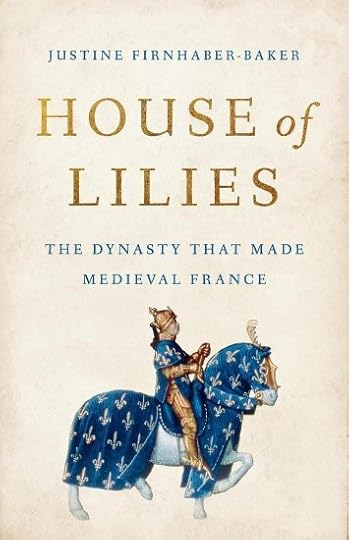
House of Lilies: The Dynasty That Made Medieval France
Hardcover – 21 May 2024 (US)
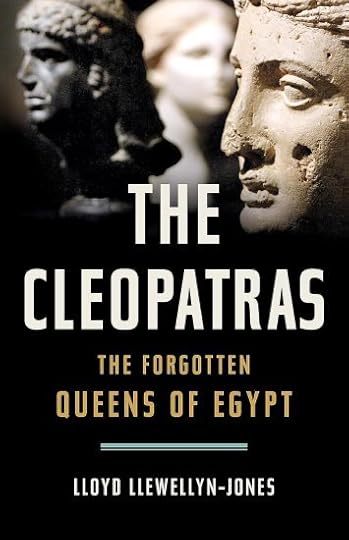
The Cleopatras: The Forgotten Queens of Egypt
Hardcover – 21 May 2024 (US)
The post Book News Week 21 appeared first on History of Royal Women.
May 17, 2024
Iconic royal photographs go on display
Royal Portraits: A Century of Photography has now opened at The King’s Gallery at Buckingham Palace.
The new exhibition, which features 150 items from the Royal Collection and the Royal Archives, tracks the evolution of royal portrait photography over the last 100 years.
Click to view slideshow.Alessandro Nasini, curator of Royal Portraits: A Century of Photography, said, ‘The Royal Collection
holds some of the most enduring photographs ever taken of the Royal Family, captured by the most celebrated portrait photographers of the past hundred years – from Dorothy Wilding and Cecil Beaton to Annie Leibovitz, David Bailey, and Rankin. Alongside these beautiful vintage prints, which cannot be on permanent display for conservation reasons, we are excited to share archival correspondence and never-before-seen proofs that will give visitors a behind-the-scenes insight into the process of creating such unforgettable royal portraits.’
Among the photos is a never-before-seen image of four royal mothers in 1964 and a portrait of Princess Alice, Duchess of Gloucester, on her wedding day.
Click to view slideshow.Royal Portraits: A Century of Photography is at The King’s Gallery at Buckingham Palace from 17 May to 6 October 2024. Plan your visit here.
The post Iconic royal photographs go on display appeared first on History of Royal Women.
May 16, 2024
Queen Mary’s Lover’s Knot Tiara
Queen Mary’s Lover’s Knot Tiara is “set with brilliant- and rose-cut diamonds, mainly in cut-down silver-backed settings, and 19 pendant baroque pearls.”1
The design of Queen Mary’s Lover’s Knot tiara was based on a tiara that belonged to Queen Mary’s grandmother, Augusta of Hesse-Kassel, Duchess of Cambridge. The latter tiara was later left to Mary’s aunt, Augusta, Grand Duchess of Mecklenburg-Strelitz, who left it to her granddaughter, Duchess Jutta of Mecklenburg-Strelitz. This tiara was sold at auction in 1981 to Georg and Marie Gabrielle von Waldburg zu Zeil.
Queen Mary’s tiara was made using diamonds and pearl drops taken from a necklace/tiara given to her upon her marriage by “650 ladies of England.”2 An additional 13 pearls were taken from the Girls of Great Britain and Ireland Tiara, as were 11 pearls from her mother’s jewellery. 26 of the 38 pearls were made to be detachable. Six of the fixed pearls have now been removed but they had been made detachable in 1932.
Embed from Getty ImagesEmbed from Getty ImagesQueen Elizabeth II inherited the tiara in 1953, and she loaned it to her daughter-in-law, Diana, following her marriage. It is currently on loan to her granddaughter-in-law, Catherine.
The post Queen Mary’s Lover’s Knot Tiara appeared first on History of Royal Women.
May 14, 2024
Maria of Austria – A shattered mind
Archduchess Maria of Austria was born on 15 May 1531 as the daughter of the future Ferdinand I, Holy Roman Emperor and Anna of Bohemia and Hungary. She was their fifth child and third daughter.
She was just 15 years old when she married William, Duke of Jülich-Cleves-Berg, the brother of Anne of Cleves, who was briefly Queen of England. The wedding took place in Regensburg on 17 July 1546 and came about as a condition of the Treaty of Venlo between William and Maria’s uncle Charles V, Holy Roman Emperor.1 This concerned a conflict over the territory of Guelders, and with this marriage, William gave up his claim to Guelders. His sister Anne heartily approved of the match, and she sent two horses and two braces of greyhounds as a wedding gift from England.2 At the time of her marriage, Maria was described as not scholarly but “teachable” and well brought up and not beautiful but “gifted with beauty.” She knew German, Latin and Italian.3 Maria came from a fertile family as was William. His grandfather, John II, had the nickname “the Babymaker”, and he reportedly fathered 63 children.
Maria was William’s second wife, as he had previously been unhappily married to Queen Joan III of Navarre. The marriage had been forced upon her and had remained unconsummated before finally being annulled in 1545. William had initially preferred to have married Maria’s elder sister Anna, but she was promised to the Duke of Orléans.4 The Duke died young, and Anna eventually married Albert V, Duke of Bavaria.
Maria and William went on to have seven children, although one daughter named Elisabeth died at the age of 5. Their eldest son lived to become an adult but tragically died at the age of 20, leaving her only surviving son, John William, as his father’s successor. In her daily life, Maria was described as “a delicate woman of great kindness of heart, in need of care.”5 Maria likely also had a mental illness, like her grandmother Queen Joanna of Castile. Maria was unfairly blamed for the health problems that led to the death of her eldest son (most likely consumption) and the mental illness that her younger son seemed to have inherited.6
Her mental health deteriorated, and she died at the age of 50.7 She was said to have “spent the last years of her life in mental derangement.”8 One Cardinal Commendone reported that “the pious woman had scruples that her marriage to William could not be legitimate because her husband had married Joan of Navarre and had consummated the marriage with her. Worry, pain and doubt would have shattered her mind.”9 Maria was buried in the Stiftskirche in Cleves, but there is no marker on her grave. She is reportedly buried underneath the organ.
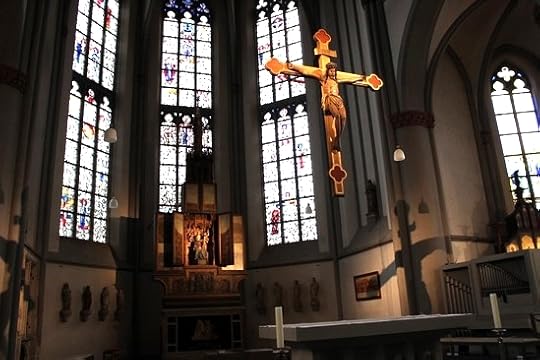 Photo by Moniek Bloks – Organ can be seen on the right
Photo by Moniek Bloks – Organ can be seen on the rightBoth of her sons died without children, leading to a succession dispute that eventually divided the lands. However, three of her daughters had children.
The post Maria of Austria – A shattered mind appeared first on History of Royal Women.
May 13, 2024
Royal Wedding Recollections – Crown Prince Frederik of Denmark & Mary Donaldson
Mary Donaldson met her future husband, Frederik, Crown Prince of Denmark, on 16 September 2000 during the 2000 Summer Olympics. He travelled back and forth between Denmark, and they conducted a long-distance relationship. Mary briefly worked in Paris before making the final move to Denmark. On 24 September 2003, it was announced that Frederik’s mother, Queen Margrethe II of Denmark, intended to give her consent to their marriage. They were officially engaged on 8 October 2003.
Embed from Getty ImagesOn 14 May 2004, Mary and Frederik married in Copenhagen Cathedral. Mary wore a wedding dress designed by Uffe Frank, a Danish designer. Her bridal party included her two sisters and her friend Amber.
Embed from Getty ImagesMary’s veil had a rich royal history and was first worn by Princess Margaret of Connaught, later Crown Princess of Sweden. Her daughter Ingrid became Queen of Denmark and was the mother of Queen Margrethe II. Both wore the veil as well. Mary’s wedding tiara was a gift from Queen Margrethe and her husband, Prince Henrik. Mary also converted from Presbyterianism to the Lutheran Church of Denmark.
Embed from Getty ImagesUpon marriage, she became Her Royal Highness Crown Princess Mary Elizabeth of Denmark. She was also granted the Danish nationality.
After the wedding, the newlyweds spent the summer on a working tour of Denmark before travelling to Greenland and attending the 2004 Olympics in Athens. Their first child, Prince Christian, was born the following year on 15 October. He was followed by Princess Isabella on 21 April 2007 and twins Prince Vincent and Princess Josephine on 8 January 2011.
On 14 January 2024, Queen Margrethe II abdicated in favour of her son, making Mary the first Australian-born Queen consort in a reigning European dynasty.1
The post Royal Wedding Recollections – Crown Prince Frederik of Denmark & Mary Donaldson appeared first on History of Royal Women.
May 12, 2024
The Princess who saved Moses
The story of Moses and the Princess who saved him in Egypt is known in Christianity, Judaism and Islam. But who was the royal who saved such an important figure in the Abrahamic religions?
The story of Moses is written in the Book of Exodus in the Bible and Torah. Called Thermouthis, Bithiah, Merris or Merrhoe, she was the daughter of the ruling Pharoah who found baby Moses in the Nile River and gave him his famous name.
In Exodus, it is written: “Now the daughter of Pharaoh came down to bathe at the river, and her maidens walked beside the river; she saw the basket among the reeds and sent her maid to fetch it. When she opened it, she saw the child, and lo, the babe was crying. She took pity on him and said, ‘This is one of the Hebrews’ children.’ Then his sister said to Pharaoh’s daughter, ‘Shall I go and call you a nurse from the Hebrew women to nurse the child for you?’ And Pharaoh’s daughter said to her, ‘Go.’ So the girl went and called the child’s mother. And Pharaoh’s daughter said to her, ‘Take this child away, and nurse him for me, and I will give you your wages.’ So the woman took the child and nursed him. And the child grew, and she brought him to Pharaoh’s daughter, and he became her son; and she named him Moses, for she said, ‘Because I drew him out of the water.’ ”
At the time, the Pharoah ordered all newborn Israelite boys to be murdered to decrease their population. To save her son, Moses’s birth mother, Jochebed, hid him, and he ended up being found in the Nile River by the Pharoah’s daughter, where she had gone to take a bath. He was raised alongside the Egyptian Royal Family.
Bithiah knew Moses was Hebrew but chose to save him against her father’s orders. Afraid that Moses would not take her milk, so she called for a wet nurse (who is believed to have been Jochebed) to nurse the baby.
She was said to have devoted herself to her adopted son and eventually converted to Judaism. When Moses led the Israelites out of Egypt, the Princess went with him toward the Promised Land.
Of course, at the time, the Princess had no idea the important role her adopted son would play in rescuing the Jewish people from slavery in Egypt and leading them back toward the Promised Land. Moses went on to become one of the most important figures in Christianity and Judaism and was the prophet God presented the Ten Commandments to on Mount Sinai.
Please note that Muslims refer to the Princess as the wife of the Pharoah, Asiya. As I am a Christian, I wrote this highlighting the teachings I was taught but did not want to ignore how she is known in Islam.The post The Princess who saved Moses appeared first on History of Royal Women.
May 11, 2024
Book News Week 20
Book News Week 20 – 13 May – 19 May 2024
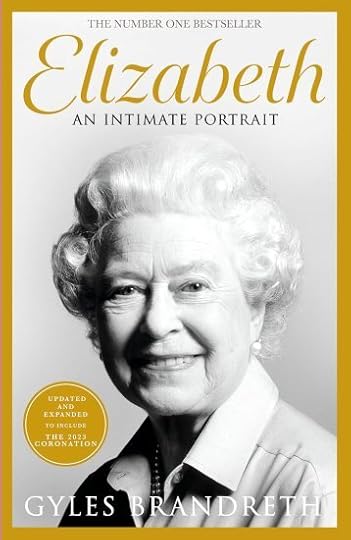
Elizabeth: An Intimate Portrait
Hardcover – 14 May 2024 (US)
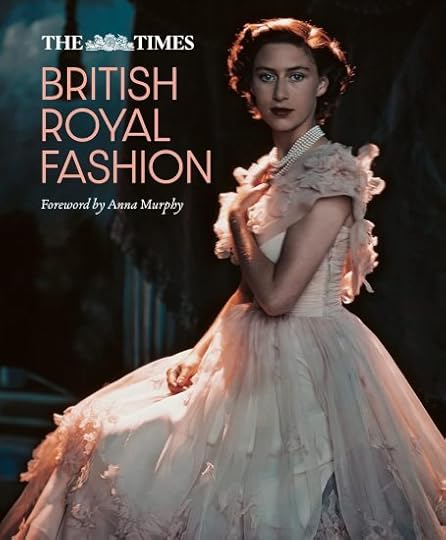
The Times British Royal Fashion
Hardcover – 14 May 2024 (US)
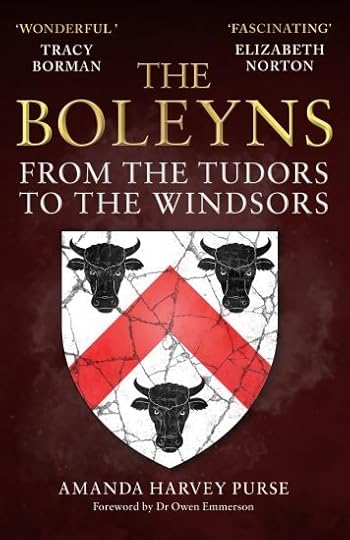
The Boleyns: From the Tudors to the Windsors
Paperback – 15 May 2024 (UK)
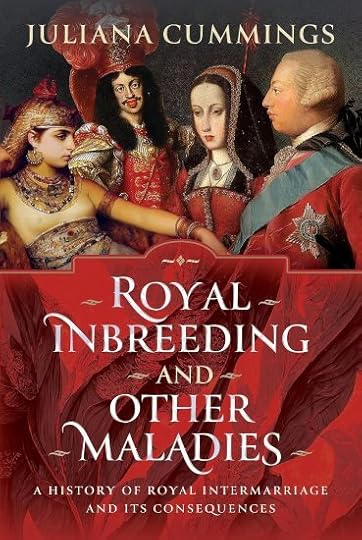
Royal Inbreeding and Other Maladies: A History of Royal Intermarriage and its Consequences
Hardcover – 16 May 2024 (US)
The post Book News Week 20 appeared first on History of Royal Women.
May 10, 2024
Book Review: Island Queens and Mission Wives: How Gender and Empire Remade Hawai‘i’s Pacific World by Jennifer Thigpen
*review copy*
Island Queens and Mission Wives: How Gender and Empire Remade Hawai’i’s Pacific World is a book that focuses on the relationship between Hawaiian royalty and the mission wives who arrived in Hawaii to bring Christianity.
The Hawaiian queens are immensely fascinating, and this book had the opportunity to be so as well. However, it is dreadfully dull and repetitive. Despite being a thin volume, there just doesn’t seem to come an end to it. I understand that this book was formed from a thesis, and it certainly reads like one. It doesn’t feel at all accessible to the more casual reader of history.
Unfortunately, I am afraid this one was not for me.
Island Queens and Mission Wives: How Gender and Empire Remade Hawai’i’s Pacific World by Jennifer Thigpen is available now in the US and the UK.
The post Book Review: Island Queens and Mission Wives: How Gender and Empire Remade Hawai‘i’s Pacific World by Jennifer Thigpen appeared first on History of Royal Women.



